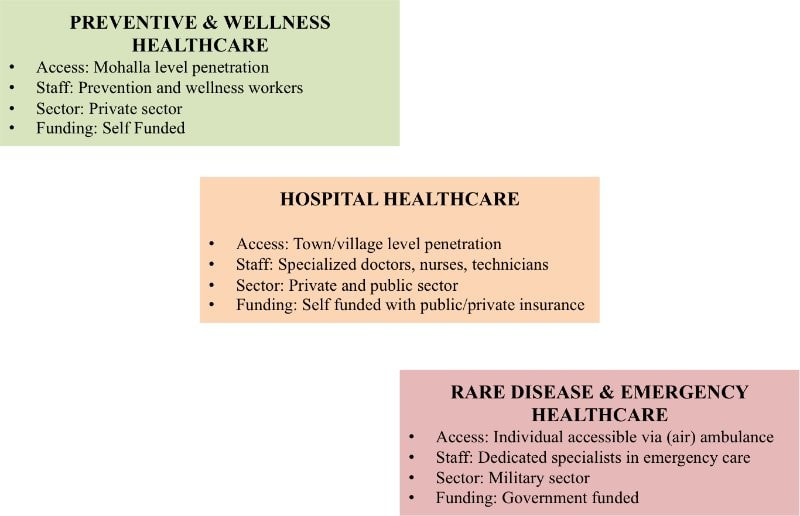|
We can improve India's healthcare, by fulfilling the specific requirements in logistics, access, staff and funding of three distinct subsystems in healthcare: 1) preventive & wellness, 2) hospital and 3) rare disease & emergency.
Last month we fundraised for a 9-year old boy named Suman who was suffering from Japanese encephalitis, and whose father was unable to afford treatment. Suman's situation and of several others (visit Milaap) revealed the glaring flaws in the Indian healthcare system. What kind of independence is it, when the masses can't afford a treatment that the family and friends of the more affluent, powerful and connected can? We have to stop looking at Healthcare as one large system, and view it as a collection of several subsystems:
Preventive & wellness healthcare needs to be accessible in close proximity to everyone. The costs of this care are low, and closely linked to nutrition and lifestyle, and the costs can be borne by people themselves. There is a huge scope for the private sector in this area and the government should promote private enterprise in the preventive & wellness healthcare sector. Special emphasis should be given to women's healthcare needs, as the prenatal womb environment can have a significant impact on the future health of children. Hospital healthcare needs doctors, nurses and advanced equipment, and it serves at one time a smaller number of people in need for medical care. The costs are high, but the middle class and richer families can pay for the treatment, while the poor should be assisted in part by the government. There is a scope for both private and public institutions in hospital care. Managing and improving hospital care has been the emphasis of governments, but without proper preventive & wellness and rare disease & emergency healthcare systems, hospital healthcare is overloaded and inefficient. Rare disease & emergency healthcare needs specialised and sophisticated care. The number of people served by the system is significantly lower, and the costs of care are very high, especially when they require a rapid response (air ambulance) or rare surgery (transplants). The cost of this care can be borne by the government for all cases. The government should institute a military style health service (MediCorps?) that caters to special needs of rare and emergency healthcare. By classifying healthcare in preventive & wellness, hospital and rare disease & emergency, and by having special logistics and funding arrangements for each, we can improve the healthcare system. When preventive & wellness care is good, the need for hospital care is lower, and this saves costs for everyone. Similarly, the treatment of rare disease & emergency conditions should work like a national insurance scheme where people by making small investments, insure themselves to get military grade well-coordinated health service. Any more suggestions, especially from people associated with healthcare, are most welcome.
277 Comments
|
Prateek RajPersonal blog. Views expressed are my own, expressed in personal capacity. Archives
May 2021
Categories |

 RSS Feed
RSS Feed
